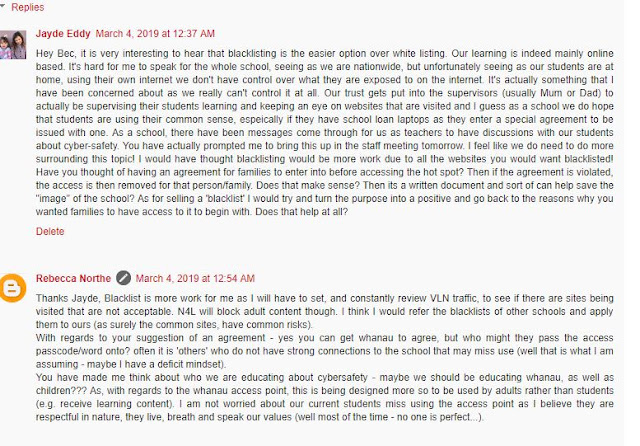Week 31 - Evaluate Your Impacts (Check)
To what extent does gamification impact on behavioural engagement for distance learners?
What?The evidence from my 'Take Action' phase shows, that the number of students that logged into our online platform before I started my inquiry compared to the end, that there was a significant increase. The impact of having ClassDojo implemented into my teaching practice was highly beneficial not only for the students but also to their supervisors. The valuable feedback that I got from the student's supervisors was all positive, they loved how Classdojo was keeping them informed with how their student was doing and also loved the connection it provided to their student's learning, and also to me as their teacher. Some of this feedback was displayed in the feedback collected by the Google Form that I sent out, however, some were in conversation over the phone or face to face. One other thing that I cannot single out and provide evidence for is the number of times that my students are contacting me now has significantly increased. Dojo points were given for contacting me but I did not have an official way of keeping a record of exactly when and how often. I have noticed this increase personally and am loving it! Another way that I know things have changed is how often my students are getting a piece of learning into me, especially when it comes to my Google Classroom activities. I am almost getting 100% in Google Classroom with the weekly activities that I put up, which is massive, but again I did not keep an official record of this.
So what?
In my Action Plan, I anticipated that using ClassDojo would increase the level of behavioural engagement of my distance learners. My anticipation has been proved correct, it has increased their behavioural engagement. My students are logging into our platform and are either completing the Google Classroom activities that I am setting on a weekly basis or they are actually engaging with their online content. As found in my research essay, engagement is the biggest challenge for distance learners, ‘students can easily become distracted and overwhelmed and may lack the motivation to accomplish course tasks,’ (Lehman et al, 2013, p.3). I feel that using gamification has improved the behavioural engagement and motivation of my distance students. I personally feel that that barrier that I found so frustrating is completely gone with some students, almost gone or nearly gone. This is massive for me as a distance teacher as I do not get to see my students every day, some I don't get to see in person at all due to where they live so I rely on phone conversations, emails and video chats to build most of my relationships. One impact that I wasn't expecting from my inquiry though was that the supervisors would enjoy using ClassDojo more than the students. This was found from the Google Form survey that I sent out to the students and their supervisors. The students seemed to not enjoy using the points and one didn't understand the reasons behind using it, however when asked if I should keep using ClassDojo looking ahead to next Term I got 90% yes from both parties!
Now what?
I have learned so much from this inquiry. I have learned that using gamification elements increase the level of behavioural engagement of distance learners. I have also learned that not all students enjoyed the process, or fully understood the process. Next time around I would perhaps not choose the beginning of the year to start an inquiry. It was incredibly stressful at the start of the year, whilst I was getting to know my students and families, getting them set up with all that they need and then needing to connect them with ClassDojo was overwhelming and a lot of information all at once. Perhaps a more suitable time to start the inquiry would have been halfway through term one, or even officially starting in term two. As Stoll & Temperley (2015) discuss spirals of inquiry have the 'potential to change the way we do things around here,' (p.14). I believe I am doing just that. I am changing not only my teaching practice, but I am also changing the "traditional" way that a distance teacher teaches. I am taking it to another level, where whakawhanaungatanga is built, maintained and valued. As I mentioned in my research essay there are three different types of engagement; behavioural, emotional and cognitive. I feel that my inquiry has been able to address the behavioral engagement so that has left me confident enough now to make sure that I am addressing the emotional and cognitive engagement of my students and who knows I could really get the 100% engagement level that I strive for! Perhaps working alongside another distance teacher may help to get another perspective and we could work on another inquiry together.
References:
Lehman, R. M., Conceição, S. C. O., & Conceio, S. C. O. (2013). Motivating and retaining online students: research-based strategies that work. Retrieved from https://ebookcentral.proquest.com
https://ebookcentral.proquest.com/lib/unitec/detail.action?docID=1376946#goto_toc
Stoll, L., and Temperley, J. (2015). Narrowing the Gap with Spirals of Enquiry: Evaluation of Whole Education’s Pilot. Whole Education, UK. Retrieved from http://www.wholeeducation.org/download,634

Comments
Post a Comment